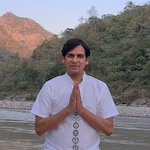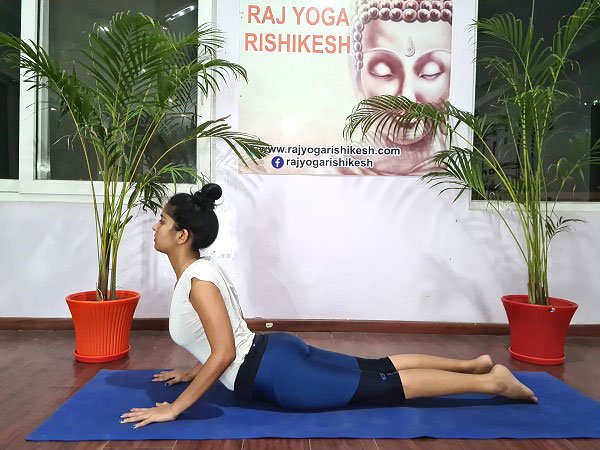In the vast world of yoga, few postures are as iconic as Cobra Pose, or Bhujangasana. As a cornerstone of the classic Sun Salutation, this graceful backbend is often one of the first poses a new student learns, yet its depth and benefits continue to unfold even for the most seasoned practitioners. It is a posture of strength, grace, and profound opening.
The name comes from the Sanskrit Bhujanga (cobra or serpent) and Asana (pose). When you embody this posture, you mimic a cobra rising from the earth with its hood expanded—a powerful symbol of awareness and vitality. Bhujangasana serves as a potent antidote to the chronic slouching and forward-hunching posture induced by hours at a desk, awakening the spine and opening the heart.
What's in this Guide:
The Abundant Benefits of Cobra Pose
When practiced consistently, Bhujangasana offers a wealth of benefits for both body and mind.
Physical Benefits
- Strengthens the Spine and Core: It directly targets the erector spinae muscles along your spine, which is essential for preventing back pain and maintaining a healthy posture.
- Opens the Chest and Shoulders: The pose is a powerful counter to "tech neck" and rounded shoulders, stretching the chest muscles and expanding the rib cage to improve lung capacity.
- Improves Digestion and Circulation: The gentle pressure on the abdomen massages the digestive organs, while increased blood flow nourishes vital organs.
- Enhances Flexibility and Posture: Regular practice encourages the natural curvature of the spine, keeping it supple and correctly aligned.
Mental & Energetic Benefits
- Relieves Stress and Fatigue: Gentle backbends are known to stimulate the adrenal glands, which can help combat fatigue. The heart-opening nature of the pose also calms the nervous system.
- Boosts Energy and Confidence: By stimulating the Anahata (Heart Chakra), this pose is linked to increased self-confidence, courage, and emotional resilience.
How to Practice Cobra Pose: A Step-by-Step Guide
Mindful alignment is key to receiving the full benefits of Bhujangasana. Follow these detailed steps to perform it safely.
1. Lie Down on Your Stomach
Begin by lying prone on your mat. Extend your legs straight behind you with the tops of your feet resting on the floor. Rest your forehead gently on the mat.
2. Position Your Hands
Slide your hands underneath your shoulders, placing your palms flat on the floor with fingers spread wide. Hug your elbows in close to your ribcage.
3. Inhale and Begin to Lift
On an inhale, gently press through your palms to peel your head, neck, and chest off the floor. Use your upper and mid-back muscles to initiate the lift, keeping your hands light at first.
4. Engage and Align
Press the tops of your feet and your pubic bone gently into the mat to stabilize your lower back. Roll your shoulders back and down, away from your ears. Lift your sternum forward and up to open your heart. Keep your neck long, gazing softly forward or slightly up. Hold for 3 to 5 breaths.
5. Exhale and Release
On an exhale, slowly lower your chest and forehead back to the mat. Turn your head to one side and rest for a few moments, feeling the effects of the pose.
Beginner’s Tip: Start with a "Baby Cobra" by lifting only a few inches and keeping your elbows bent. The goal is to build back strength, not to lift as high as possible. Never force a backbend.
Watch the Pose in Action
Common Mistakes to Avoid
- Crunching the Neck: Keep the neck long by drawing the shoulders down and back.
- Lifting the Hips: Keep the pubic bone and tops of the feet grounded to protect the lower back.
- Relying on Arm Strength: Use your back muscles to do most of the lifting. Your arms are for support.
Variations for All Levels
1. Sphinx Pose
A restorative alternative. Rest on your forearms with your elbows directly under your shoulders. This provides a gentle backbend with no pressure on the wrists.
2. Baby Cobra (Ardha Bhujangasana)
Lift only your head and chest a few inches off the floor, keeping your elbows bent and close to your body. This is excellent for building foundational back strength.

About the Author: Yogi Sandeep
Born in Rishikesh into a traditional family where the Vedic tradition has been a way of life for generations, Yogi Sandeep is the founder of Raj Yoga Rishikesh. He is an E-RYT 500 Teacher, holds a Master's degree in Yoga, and has over a decade of teaching experience.
Cobra Pose FAQs
Is Cobra Pose the same as Upward-Facing Dog?
No. In Cobra Pose, the hips and thighs remain on the floor, and the elbows are often bent. In Upward-Facing Dog, the hips and thighs are lifted off the floor, making it a more intense posture that requires more upper body strength.
Is Cobra Pose good for sciatica?
For some people, a very gentle Cobra Pose can help alleviate mild sciatica by decompressing the lower spine. However, if you have a severe back injury like a herniated disc, you must avoid it or only practice under the guidance of an expert teacher or therapist.
When should I avoid Cobra Pose?
Avoid this pose if you have a severe back injury, carpal tunnel syndrome, recent abdominal surgery, or are pregnant. Always listen to your body and never push through sharp pain.
Awaken Your Spine, Open Your Heart
Mastering foundational poses like Bhujangasana is essential for a safe and transformative practice. Learn authentic alignment in our 200-Hour Yoga Teacher Training in Rishikesh.
Learn More About Our Training →
